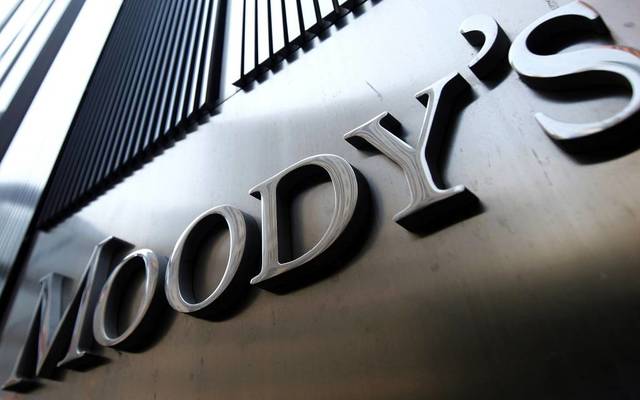Moody’s Investors Service has downgraded the Government of Lebanon’s issuer rating from Ca to C, without any outlook to the rating, as losses for bondholders now exceed 65%.
According to the rating agency, “obligations rated C are the lowest rated and are typically in default, with little prospect for recovery of principal or interest.”
Anything below Ba1 is considered non-investment grade or ‘junk’. The earlier Ca rating is described as “default imminent with little prospect for recovery”.
The primary reason for Lebanon’s continued plummet is a general absence of reforms, fiscal containment and no privatisation.
“The country is steeped in an economic, financial and social crisis, which very weak institutions and governance strength appear unable to address,” Moody’s said.
Justifying the rating cut, Moody’s said that on July 23, a rating committee was called to discuss the rating of the Government of Lebanon.
It said that, “economic fundamentals, including economic strength, have materially decreased; institutions and governance strength, have materially decreased; fiscal or financial strength, including its debt profile, has materially deteriorated; and, the issuer has become increasingly susceptible to event risks.”
The C rating reflects Moody’s assessment that the losses incurred by bondholders through Lebanon’s current default are likely to exceed 65%.
The rating agency said the collapse of the currency in the parallel market and the concomitant surge in inflation fuel a highly unstable environment.
“In the absence of key steps toward plausible economic and fiscal policy reform, official external funding support to accompany a government debt restructuring is not forthcoming.”
The rating agency said that Lebanon is steeped in a severe economic, financial and social crisis, with the level of economic activity plunging at a fast rate, the currency plummeting in the parallel exchange rate market, inflation skyrocketing, and an increasing part of the population without a job or income prospects.
On 16 March, Lebanon defaulted on its international bond due on 9 March after the grace period expired. On 23 March, Lebanon announced it would cease servicing other outstanding foreign-currency debt; four days later, the public debt restructuring commitment was extended to include local-currency debt.
Recurring delays with the implementation of fiscal and economic policy reforms, outlined in the government’s reform programme presented on 28 April as basis for negotiations with the International Monetary Fund (IMF) for an external support package to accompany a government debt restructuring, have stalled discussions with the IMF and with other international official donors.
Limited progress has been achieved in key prerequisites, including a forensic audit of the Banque du Liban (BdL), the adoption of comprehensive capital controls legislation, and a general consensus among domestic stakeholders in favour of the government’s debt restructuring and reform plan.
The continued drawdown of Lebanon’s foreign exchange reserves is reflected in the acute devaluation of the local currency in the parallel market by over 80%. This is fuelling significant import compression and contributing to a spike in inflation readings to almost 90% year-over-year as of June 2020 from 6.7% at the end of 2019.
The resulting erosion of consumers’ purchasing power accompanied by investment contraction deepen the expected double-digit economic slump in 2020 and set the stage for severe social disruptions.
Moody’s projects the debt/GDP ratio to increase further to about 200% of GDP in 2020, driven by the exchange rate effect assuming an adjustment in the official peg to LBP3,500 per US dollar as outlined in the government’s reform plan.
Looking forward, Moody’s projections show that the debt trajectory remains particularly sensitive to adverse growth and foreign exchange dynamics, underscoring the potential for further loss accumulation in the absence of a restructuring agreement with the support of the IMF. Access to previously pledged international investment support is conditional on the implementation of an IMF reform programme, neither of which are likely to be secured in the next few months.
Environmental, social impact
Environmental considerations are relevant for Lebanon’s credit profile, in particular through the impact of climate change on the tourism industry.
Water shortages will likely become more frequent and pervasive due to increased demand from agriculture and industry, constraining growth unless they are addressed by effective policies. Waste management also represents a chronic challenge.
Social considerations are one of the key credit drivers of the sovereign rating. Sectarian fragmentation leads to frequent protracted negotiations between political parties and government stalemates that contribute to economic and financial instability, reflected in Moody’s assessment of heightened domestic political risk.
Governance considerations are a driver of the Moody’s rating action.
Sectarian fragmentation also impacts governance with control of corruption and political stability representing key challenges.
The BdL’s reduced monetary and financial policy effectiveness in light of exhausted external buffers adds to the government’s weak fiscal policy track record, thus driving Moody’s very weak overall governance assessment.
Moody’s believes that if there are any upward movements in Lebanon’s sovereign rating after the debt restructuring, they are likely to be limited for a considerable period of time. It is unlikely Lebanon’s rating would move from its current position prior to restructuring, given the extent of macroeconomic, financial and social challenges and Moody’s expectation of very significant losses.
For Lebanon’s issuer rating to rise above levels associated with very high probability of future default and significant losses, the implied pace of fiscal consolidation and/or structural reform implementation would be much faster than is currently expected, over a number of years.
A further precondition for a substantive upgrade would also be that the key drivers of the country’s debt dynamics such as economic growth, interest rates, privatisation revenue, and the ability to generate and sustain large primary surpluses were seen to be evolving in a way that would ensure debt sustainability in the future.










